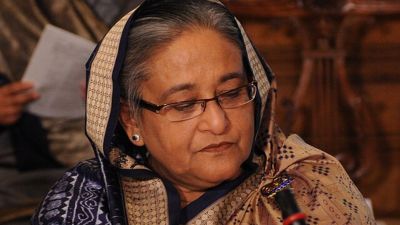Human spirit comes alive as art breaks barriers
CHANDIGARH, Nov 15: Words failed in that moment of "hasta manana" as boundaries created by language and nationality were broken by...

CHANDIGARH, Nov 15: Words failed in that moment of "hasta manana" as boundaries created by language and nationality were broken by the spirit of human bond through the "art beats".
And as the youngsters danced away singing "We will meet again"in each one’s mother tongue, it was not the Bulgarian or the Hungarian or the Punjabi phrase that one heard but the yearning within each to come together again. In fact the audience also joined them with moist eyes.
It was the grand finale of the nine-day-long Global Youth Theatre Workshop-cum-Festival organised by the Chandigarh Institute of Performing Arts. For the last nine days, this bunch comprising students of art and theatre from Hungary, Czech Republic, Yugoslavia, Bulgaria and this region learnt, practised and imbibed the intricacies of Indian dance forms and their connection with theatre, interlinking with their own respective forms of theatre and dance. Under the watchful eyes of Bharatanatyam danseuse Suchitra Mitra, scholar on theatre H S Dilgir, Nautanki expert Urmil Kumar Thapliyal and theatre personality from Lucknow P D Verma, they prepared assiduously for this evening’s show.
The programme commenced on a traditional Indian note with Ganapati Vandana, complete with an arousing Shankh. So what if the Ganapati had a Bulgarian origin, for Tzvetelina Gospodinova could convey the serenity and little bit of natkhat nature of the Elephant God in toto. Since the texts were slightly difficult for the foreign students to comprehend, the teachers thought of a ballet based on the nine rasas. Navras saw the group expressing the various emotions in a manner that instantly endeared them to the audience. After a brief interlude wherein the CIPA presented a play, Chor Aayega dabe Paav, one saw an exhilarating Bulgarian dance and heard a Czech song.
Though the bhangra by a team of three pairs of different nationalities, with Hungarian Tamas Szurdi, full of vigour, leading the way, was a treat for the eyes, it was the dance by the students from the GNM School of Dramatic Arts in Hungary that stole the show. For they presented "Alone", a blend of their folk forms and modern acrobatic elements which according to them was called "movements in theatre" back home. This dance was relevant indeed for the Indian audience as they depicted a "play of chairs".




- 01
- 02
- 03
- 04
- 05



























